Scoil Fhionáin
Fáiltíonn Foireann Scoil Fhionáin roimh gach páiste, tuismitheoirí agus cuairteoirí go dtí an scoil.
Tá forbairt iomlán achan pháiste lárnach i saol na scoile seo agus is mian leis an scoil seo oideachas a sholáthar a shíolraíonn onár ndúchas creidimh, cultúr agus teanga agus a chothaíonn meas do chearta gach duine.
This school draws its inspiration from our Gaelic, Christian and Cultural heritage and aims to provide a child-centred education which fosters respect for every individual
Scoil Fhionáin
Bunaíodh Scoil Fhionáin i 1949. Scoil mheasctha, Chaitliceach, Ghaeltachta is ea í Scoil Fhionáin atá faoi phátrúnacht Easpag Rath Bhóth. Tá an scoil suite taobh amuigh de bhaile an Fhál Carraigh in aice le hEaglais Naomh Fionáin. Mar chuid den stráitéis ionchuimsiú na scoile, fosclaíodh Rang do riachtanaisí uathachais i Meán Fómhair 2020 agus Rang eile i Meán Fómhair 2022.Tá 180 dáltaí ag freastal ar an scoil faoi láthair.
Ar stair áitiúil Chloich Cheann Fhaola
Seo liosta na ranganna/foireann don scoilbhliain 2023/24 Classes and list for Staff list 2023/24
Foireann SNA
Rose Mhic Aoidh
Amanda Mhic Giolla Chomhaill
Tina Nic Suibhne
Marie Carlin
Andrea Brennan
Laura Ni Cholm
Michelle Ní Cholla
Áine Nic Giolla Chomhaill
Lorcán Ó Gallachóir
Fionnuala Ní Chreadaigh
Airíoch / Caretaker
Patsy Coyle
Austism needs class: Agnes Ní Cholla
Rang Nua/Autism needs class: Keevagh Ni Dhónaill
Naíonáin Shóisearacha/Junior Infants: Fionnuala Ní Dhochartaigh
Naíonáin Shinsearacha/Senior Infants: Pól Ó hIcí
Rang a hAon; Sinéad Ni Chuireáin
Rang a Dó: Seán Ó Colla
Rang a Trí / 3rd class: Niamh Ní Bhroin
Rang a Ceathair/ 4th class: Jenna Ní Fhíoruisce
Rang a Cúig : Breda Mhic Gabhann
Rang a Sé: Yvonne Uí Ruiséil
Stiofán Ó Canainn - Príomhoide
Yvonne Uí Ruiséil - Leas Phríomhoide
Múinteoirí Tacaíochta / Support Teachers
.jpg)
|
Gairdín Frankie |
Thug Páistí ó rang 5 cuairt at Leac Cholm Cille nó Cloch na bhfáinne mar a thugtar ar atá ar Chnoc an Chaisil. |
Local Place namesBallina / Béal an Átha Balliness / Baile an Easa Ballintemple / Baile an Teampaill Ballyconnell / Baile Chonaill Ballyboes / Baile na Bó Carrowcannon / Ceathrú Ceannain Clonbara / Cluain Báire Cloughaneely / Cloch Cheann Fhaola The Stone of the Head of Mac Aneely. Derryreel / Doire Uí Fhrighil Dunmore / Dún Mór |
Mass Rock Balyboes
Teach Bhaile Chonaill / Ballyconnel House
Ar cuairt ag Uaigh Olphert i mBaile Chonaill Seamus Doohan a parent of the school takes 1st and 2nd classes on a historical walk in Cloughaneely |
|
Tugann Seamus rang 6 ar shiúlóid go Loch Altán.
Bhí lá iontach acu.
Go raibh míle maith agat a Sheamuis.
|
|
Drumnatinney / Droim na TineThe Hill of Fire Errarooey / Oirthear Dhumhaigh Eas Fhionán Falcarragh / Fálcarrach Killult / Cill Ulta Meenderry / Mín Doire Meenagapog / Mín na gCapóg Muckish / An Mhucais Moyra / Maigh Ráth Newtown / An Baile Úr Oldtown / An Sean Bhaile Procklish / Pruchlais Ray / Ráithe Sroohan / Sruthán Tulach – small hill The Hill of Begley |
Ray ChurchRay Church According to a local tradition, the first church at Ray was founded by St Fionan in the sixth century. A church survived there until the seventeenth century, when it was destroyed by a platoon of Cromwellian soldiers under the command of Captain Cunningham. The soldiers burst open the door one Sunday morning, during Mass, and slaughtered the congregation. This came to be known as The Massacre of Ray (Marfach Ráithe). The dead are buried within two hundred meters of the church at a place called Resting Place of the Bones (Lag na gCnámh). The church continued to be used by the Church of Ireland until the early 19th century. Many members of the Olphert land-owning family of Ballyconnell are buried here. Cros mhór í seo- fiche troigh ar fhad agus seacht dtroighe ar leithead- atá ins seasamh in éadán an bhalla thuaidh taobh istigh de Theampall Ráithe. Deirtear gur gearradh an chros as taobh na Mucaise agus go raibh sé ar intinn ag Colm Cille í a thabhairt go Toraigh ach gur bhronn sé ar Naomh Fionán í siocair go bhfuair sé Bíobla a chaill sé fána choinne. Sa bhliain 1750 leag stoirim an chros agus fágadh ina luí briste sa relig í go dtí gur chóirigh Oifig na nOibrithe Poiblí í sna 1970í. Cuireadh an chros ina seasamh ansin taobh istigh den teampall. Tá lorg na croise le feiceáil sa reilig go fóill san áit a raibh sí ina luí. Tá dhá chloch mhuilinn ag bun na croise agus tá dhá chloch eile sa relig arb’fhiú a fheiceáil, cloch scála ceann anháin acu agus cloch theorann, an ceann eile. |
Rang 5 visit Ray Church |
|
St Colmcille’s Cross This large ringed cross, twenty feet in height and seven feet in width, stands against the north wall, inside the ruins of Ray Church. The cross is said to have been sculpted from a solid rock quarried from Muckish Mountain, and was originally intended for Tory by St Colmcille. Colmcille, however presented it to St Fionan for retrieving his misplaced Bible. The cross was knocked down in a storm about 1750, and lay broken in the graveyard until it was repaired by the Office of Public Works in the 1970’s. Two broad metal strips were used to secure the cross in one piece, and it was re-erected inside the building. At the base of the cross there are two millstones, one of which has been cut to form a cross base, and the other in which there is a cork screw perforation. In the graveyard there is a basin stone, and in the North East corner of the graveyard a standing stone, which is approximately six feet high and three feet wide. Teach Phobail Naomh Fionán |
Teampaill Ráithe / Ray Church |
|
An Sean Teach Pobail Thógadh an sean teach pobail san suíomh seo thar céad bliain ó shin. Thug an tiarna talún, Wybrants Olphert, céad don sagart paróiste san am, Séamus Mac Pháidín, an teach pobail a thógail. Chosáin an teach pobail £3000. Ba sin cuid mhór airgid sna am sin, mar go raibh na daoine iontach bocht. Fosclaíodh é sa bhliain 1882 agus mhair sé tuairim is céad bliain. Bhí deacrachtaí ag baint leis ag an deireadh mar go raibh daonra na h-áite ag meadú agus ní raibh go leor áite ann do phobal Dé. Shocraigh na daoine teach pobail úr a thógail.
Ba é Wilfred Cantwell as Baile Átha Cliath a bhí ina áilteoir agus Caoimhín Mac Mongail an conraitheoir ar thógáil an tí phobail. Thosaigh muintir na h-áite ag cruinniú airgid. Dúradh go raibh £500,000 le cruinniú ach mhéadaigh an luach sin mar go raibh deacrachtaí le díon an tí phobail. Bhí díon aispeist le dul air ar dtús ach ní raibh cuid de na daoine sásta le sin mar gheall ar chúrsaí sláinte. Ansin cuireadh díon copair air ach níor éirigh leis mar go raibh uisce ag síleadh anuas. Sa deireach cuireadh díon slataí air. |
Teach Phobail Naomh Fionán |
|
Bá Bhaile an Easa / Balliness Bay |
EaragailMountains Earagail and Muckish can be seen from the school. These mountains attract many climbers to the area. They overlook the parishes of Cloughaneely, Doe and Gweedore. Balliness Bay / Bá Bhaile an Easa Tá Bá Bhaile an Easa timpeall 2km ón scoil. Tá trá ghalánata anseo. Tá na hoileáin Toraigh agus Inis Bó Finne le feiceáil ó seo fosta. Bíonn páistí na scoile ar siúlóidí nádúrtha go dtí an bhá fosta. |
|
Muckish from the Bridge of Sorrows |
Ag amharc ar an Mhucais |
Contact Us - Eolas ar Scoil Fhionáin
|
Scoil Fhionáin
An Fál Carrach
Co Dhún na nGall
Fón: 074 9135122
Ríomhphost: scoilfhionain.anfalcarrach@gmail.com
Príomhoide: Stiofán Ó Canainn
Leas Phríomhoide: Patricia Ní Ghrodaí
|
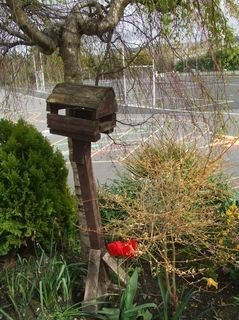
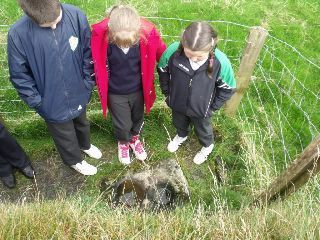
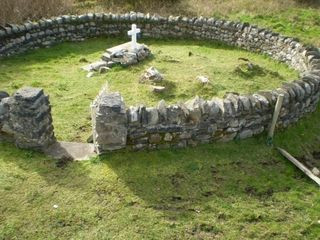
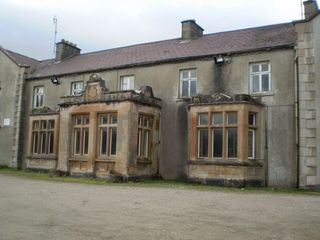
(1).jpg)
.jpg)

.jpg)
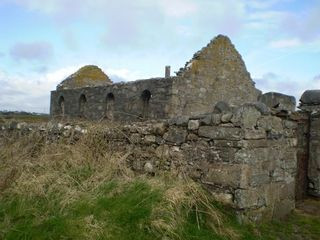
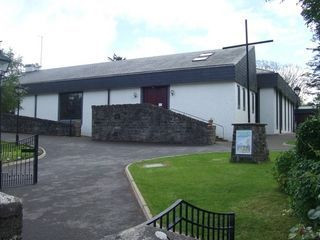
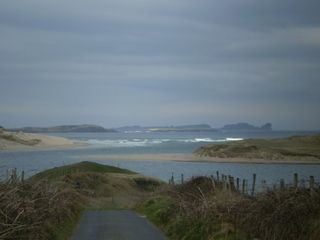
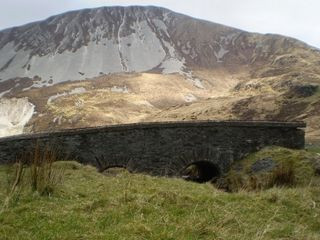
.jpg)